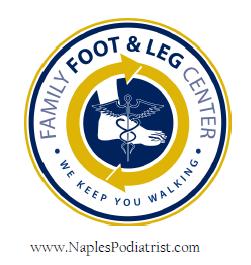The high heel pedCAT scan. Picture: Screengrab, YouTube
THE first 3D scan of a female foot in high heels has highlighted the painful price fashion- conscious women may pay for tottering around in towering Christian Louboutins or Jimmy Choos.
Consultant orthopaedic surgeon Andy Goldberg says all the body weight gets forced on to the front of the feet, eventually causing unsightly clawed toes that can become arthritic.
Wearing stilettos pushes and twists bones out of line, resulting in knobbly bunions and other painful conditions.
The picture above was taken with a new $340,000 scanner at the Royal National Orthopaedic Hospital in North London. The PedCAT machine, the first of its kind in the UK, does a 360-degree scan of the patient's feet in just 60 seconds.
Doctors can then view the resultant 3D image from every angle, spinning it around to view the foot from above, below and the side. It also takes 600 2D views of the foot.
Mr Goldberg, a foot and ankle specialist, said the technology was a major advance over traditional 2D X-rays, which could lead to misdiagnoses.
"The scanner gives us much more information"' he said.
'It shows the deformity caused by wearing high heels is much more complicated than we previously thought.
"With high heels, the toes are squashed inside the shoe. The more stiletto-shaped they are, the worse it is. The toes not only get squashed, but they become clawed too." The base of the big toe becomes 'deviated outwards', forming a bunion, while the scanner also shows how these bones can become 'rotated and dropped'.
Pea-shaped bones under the base of the big toe - called sesamoids - get dislodged by the immense pressures put on them.
"There's nothing wrong with being in this high heel position temporarily - it forms a part of your normal stride. And if you wear heels for an hour or two at an evening party, it's not a problem" Mr Goldberg said.
"But if you wear them for eight hours a day for years on end, you will develop problems."
Before the high heel pedCAT scan. Picture: Screengrab, YouTube
It wasn't just middle-aged women who suffered, he said. "It's not uncommon for me to see teenage girls in my clinic. They are usually accompanied by their mothers, who tell them, 'Look, the doctor says you should be wearing sensible shoes!' But I try not to get involved with family politics too much.
"If you have got a family history of high heel wearers and you wear them a lot, you are pretty much guaranteed to develop bunions," he said.
"If you are not genetically predisposed, wearing high heels may accelerate bunions.
"Foot and ankle problems affect your walking and take over your life. There's a saying that if you want to take someone's mind off a problem, put them in tight shoes."
A survey of patients at the hospital's foot and ankle clinic found that 57 per cent had experienced severe pain as a result of wearing uncomfortable shoes such as high heels.
And 86 per cent claimed they found it difficult finding comfortable shoes. In truth, the internet is now awash with firms which offer sensible footwear in fashionable shades.
"People don't like doctors like me saying, 'Your shoes are a problem.' If I suggest they buy themselves some comfy shoes, I'm liable to get punched in the face." Mr Goldberg added. He also claimed some patients exaggerated the pain their bunions caused to get them surgically removed - so they could then continue to squeeze their feet into fashionable shoes.
Mr Goldberg said the damage caused by high heels was nothing new: "We have always been slaves to fashions that have led to deformity.
"But what we should be doing is fitting people's shoes around their feet, rather than the other way around.
"If a fashion icon such as Victoria Beckham designed a range of shoes that really fitted our feet, then that would be a real game-changer."
Victoria Beckham attends party to celebrate 40th anniversary of Range Rover. Picture: Supplied.
A HIGH PRICE TO PAY: HOW THE DEFORMITY AND PAIN DEVELOPS
- Prolonged 'hyper- extension' of these toe joints, under intense pressure, causes pain.
- High heels force women to throw their weight on to the front of the foot. Toes get squashed together and clawed up, eventually becoming rigid and arthritic.
- Big toe bones become pushed out, forming the trademark bunion of many high-heel slaves.
- Pea-shaped sesamoid bones are drawn underfoot and out of position, affecting how the foot bends and resulting in pain
We've indirectly known much of what this is saying but we are now exclusively certain the perils that feet are subjected to with regards to high heeled shoewear. These 3 dimensional scans give us an exact orientation to the deforming forces that women are subjecting their foot to on a daily basis, and it can give significant biomechanical insight to the resulting deformities and symptomatology associated with them.
-DR TIMM








